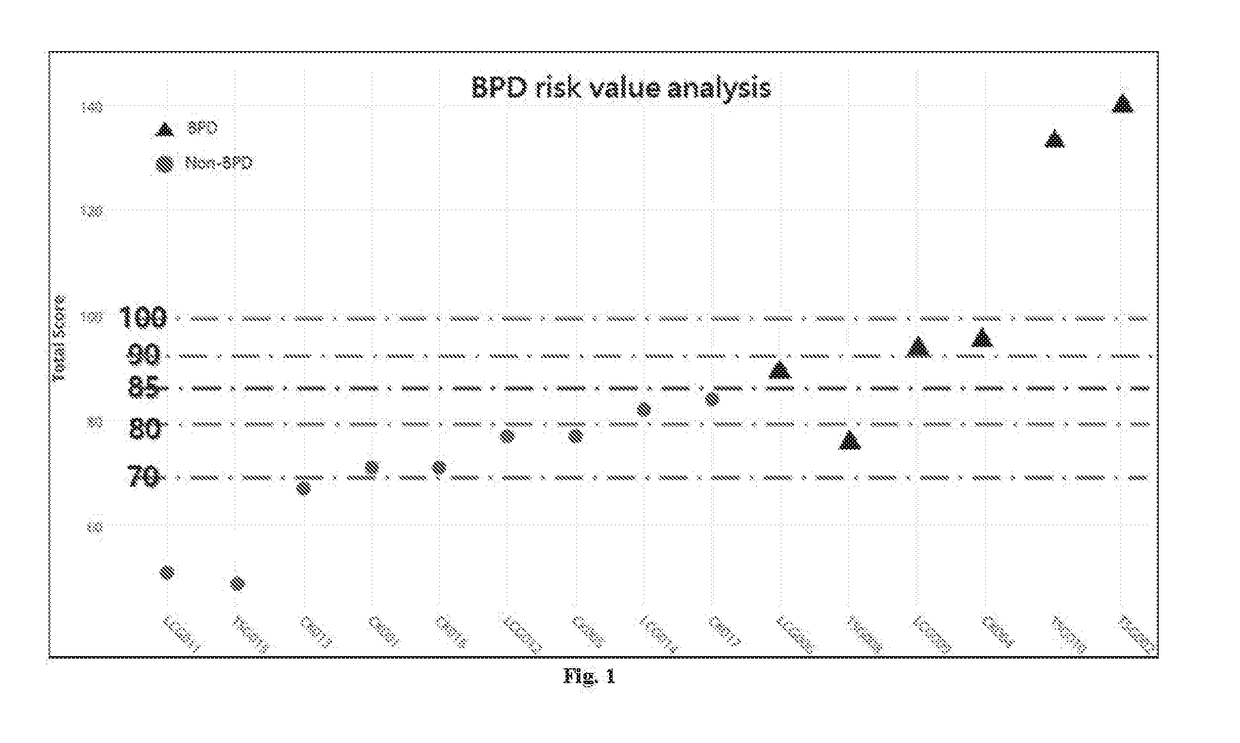Method for identifying a greater risk for developing bronchopulmonary dysplasia
a technology of bronchopulmonary dysplasia and risk identification, applied in the direction of microbiological testing/measurement, biochemistry apparatus and processes, etc., can solve the problems of neonatal mortality and morbidity worldwide, and the diagnosis and prevention of this disease remains challenging
- Summary
- Abstract
- Description
- Claims
- Application Information
AI Technical Summary
Benefits of technology
Problems solved by technology
Method used
Image
Examples
example 1
[0024]Briefly, the genomic DNAs were isolated from mesenchymal stem cells derived from the placenta of 15 mothers of respective preterm infants. The RANTES gene and the NQO1 gene were amplified using PCR, and then were subjected to Sanger sequencing to identify the nucleotide of rs2280789 SNP and the nucleotide of rs1800566 SNP, respectively. In a parallel test, genomic DNAs were isolated from umbilical cord blood sample and the nucleotide of rs2280789 SNP and the nucleotide of rs1800566 SNP were identified, respectively (data not shown).
[0025]The risk scores of developing BPD were calculated according to the following rules:
[0026](1) RANTES and NQO1 Genes SNPs
[0027]For RANTES T / C (rs2280789), the genotype TT (wild-type) is given a score of 10, the genotype TC (hetero-type) is given a score of 40, and the genotype CC (mutant type) is given a score of 50. For NQO1 T / C (rs1800566), the genotype CC (wild-type) is given a score of 20, the genotype TC (hetero-type) is given a score of 30...
PUM
| Property | Measurement | Unit |
|---|---|---|
| Length | aaaaa | aaaaa |
| Fraction | aaaaa | aaaaa |
| Fraction | aaaaa | aaaaa |
Abstract
Description
Claims
Application Information
 Login to View More
Login to View More - R&D
- Intellectual Property
- Life Sciences
- Materials
- Tech Scout
- Unparalleled Data Quality
- Higher Quality Content
- 60% Fewer Hallucinations
Browse by: Latest US Patents, China's latest patents, Technical Efficacy Thesaurus, Application Domain, Technology Topic, Popular Technical Reports.
© 2025 PatSnap. All rights reserved.Legal|Privacy policy|Modern Slavery Act Transparency Statement|Sitemap|About US| Contact US: help@patsnap.com

